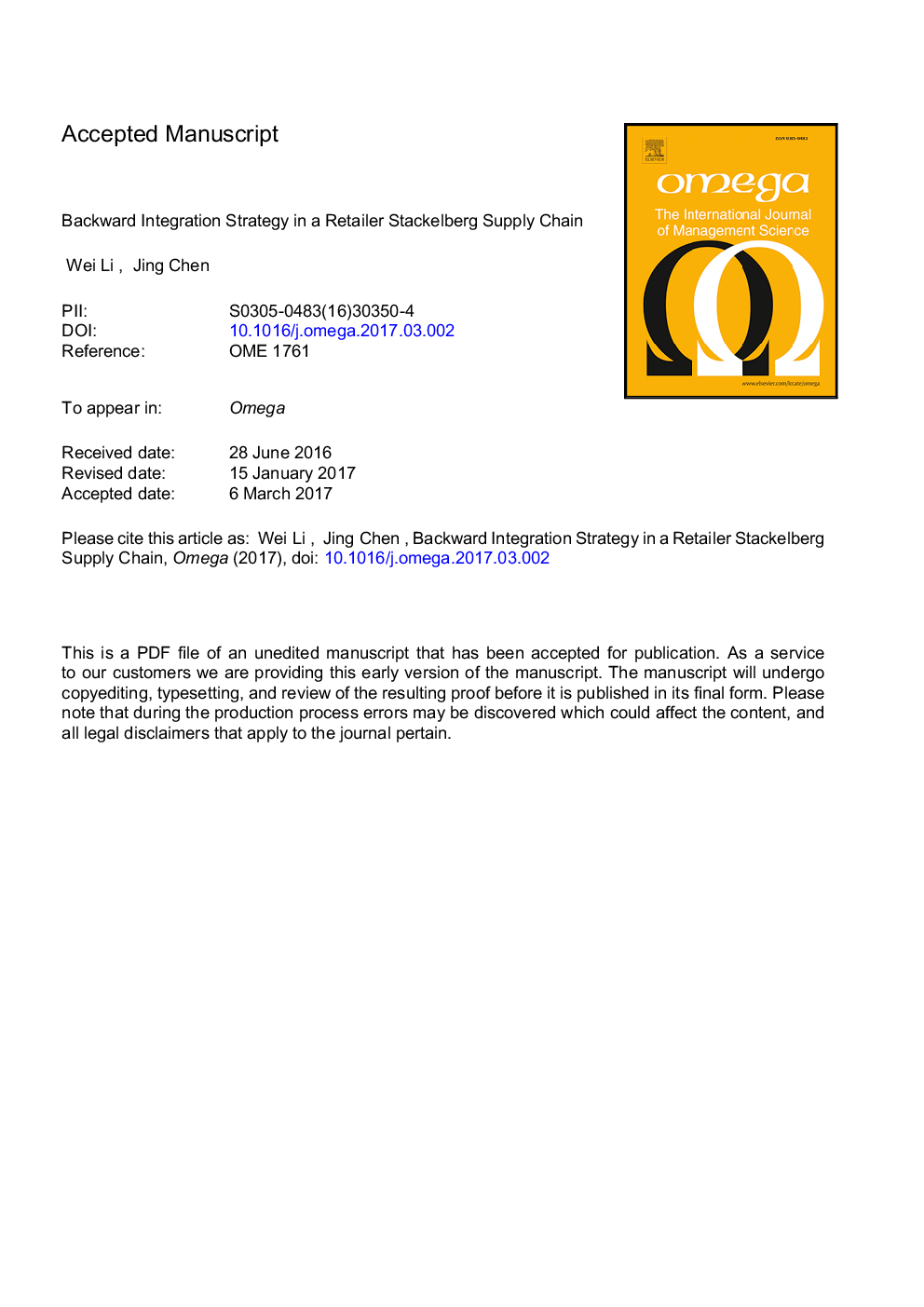| Article ID | Journal | Published Year | Pages | File Type |
|---|---|---|---|---|
| 7436772 | Omega | 2018 | 36 Pages |
Abstract
We develop game-theoretic models to study a retailer's Stackelberg supply chain, in which the retailer sells a product in two quality-differentiated brands to customers who are heterogeneous in product valuation. The retailer has three strategy options: selling two brands supplied by two competing manufacturers, or integrating backward with either the high- or the low-quality manufacturer. We examine the retailer's backward integration strategy and discuss the effects of channel integration on the price and quality competition between the two brands and on the supply chain's performance. We demonstrate that the quality difference and the relative efficiency of the two brands have a major impact on the performance of the supply chain structure. We find that when the qualities of the two brands are exogenous, and if the setup costs of integration are ignored, although integration intensifies the price competition between two brands, the retailer always prefers integrating backward with the manufacturer with higher efficiency of producing and selling the product. When qualities are endogenous, the retailer is always better off when it integrates with the low-quality manufacturer, if the setup costs of integration are ignored. As a consequence, both brands improve the quality of their products, and the price competition between the brands is softened. The implications of the retailer's backward integration strategy are discussed.
Related Topics
Social Sciences and Humanities
Business, Management and Accounting
Strategy and Management
Authors
Li Wei, Chen Jing,
